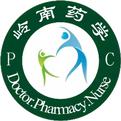


Ginseng, named for its human-like shape (人身, rén shēn), is renowned for its powerful effects in tonifying vital energy (元气, yuán qì), nourishing blood (养血, yǎng xuè), generating fluids (生津, shēng jīn), enhancing intelligence (益智, yì zhì), calming the spirit (安神, ān shén), and promoting longevity (延年益寿, yán nián yì shòu). It is celebrated as a divine herb in traditional Chinese medicine.
In martial arts films or novels, it is often depicted that critically ill patients revive after consuming thousand-year-old ginseng, which, while exaggerated, underscores the miraculous effect of ginseng in “tonifying vital energy.”
There are various types of ginseng, including Ginseng (人参, rén shēn), Red Ginseng (红参, hóng shēn), and Korean Ginseng (高丽参, gāo lì shēn). What are the differences?
What about garden ginseng (园参, yuán shēn), sugar ginseng (糖参, táng shēn), forest ginseng (林下参, lín xià shēn), and wild mountain ginseng (野山参, yě shān shēn)?
How should one select and consume ginseng?
What precautions should be taken when using it?
With these questions in mind, let’s explore this divine herb, ginseng.

 1. Understanding Ginseng
1. Understanding Ginseng
(1) Classification by Origin
Ginseng (人参, rén shēn), Korean Ginseng (高丽参, gāo lì shēn), and American Ginseng (西洋参, xī yáng shēn) are ancient plants belonging to the same genus (人参属, rén shēn shǔ) in the Araliaceae family.
Those produced in the Korean Peninsula are called Korean Ginseng (高丽参, gāo lì shēn), while those from Northeast China are referred to as Northeast Ginseng (东北参, dōng běi shēn); among them, ginseng from Changbai Mountain is known as Changbai Mountain Ginseng (长白山人参, cháng bái shān rén shēn), and that from the mountainous area near Xin Kai River in Jilin Province is called Xin Kai River Ginseng (新开河参, xīn kāi hé shēn).
American Ginseng (西洋参, xī yáng shēn), found in the United States and Canada, differs from other types; it is considered “cooling” (清凉, qīng liáng) and is used to nourish yin (养阴, yǎng yīn) and clear heat (清热, qīng rè). Therefore, it is not suitable for those with yang deficiency (阳虚, yáng xū) and cold body constitution.
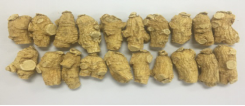
Figure 1: American Ginseng
(2) Classification by Growth Environment
1. Wild Mountain Ginseng (野山参, yě shān shēn), also known as Mountain Ginseng, refers to ginseng that grows naturally in the wild. Its characteristic is the “tight skin and fine lines” (紧皮细纹珍珠须, jǐn pí xì wén zhēn zhū xū), and the roots often appear in a human shape.
2. Transplanted Mountain Ginseng (移山参, yí shān shēn) is young wild mountain ginseng that has been moved to cultivated fields or nearby areas, or cultivated ginseng that has been transplanted to grow in natural conditions.
3. Forest Ginseng (林下参, lín xià shēn) is ginseng that is sown in the forest and grows naturally in the wild, commonly referred to as “seed sea” (籽海, zǐ hǎi).
4. Garden Ginseng (园参, yuán shēn) is artificially cultivated ginseng, which is currently the main source of ginseng products, commonly known as “home ginseng” (家参, jiā shēn).
(3) Classification by Processing Methods
The current version of the Chinese Pharmacopoeia includes two processed forms: Ginseng (人参, rén shēn) and Red Ginseng (红参, hóng shēn). However, there are many commercial specifications used clinically, classified as follows:
1. Raw Dried Ginseng (生晒参, shēng shài shēn) is ginseng that has been sun-dried or dehydrated. Raw dried ginseng is further divided into whole root raw dried ginseng (全须生晒参, quán xū shēng shài shēn), which includes the top, lateral roots, and fine roots; raw dried ginseng (生晒参, shēng shài shēn), which has had the top, lateral roots, and fine roots removed, leaving only the main root; and ginseng slices (人参片, rén shēn piàn), which are thinly sliced and dried after processing.
2. Red Ginseng (红参, hóng shēn) is ginseng that has been steamed and then dried, named for its reddish-brown color. There are also ordinary red ginseng (普通红参, pǔ tōng hóng shēn), made from garden ginseng grown for 5 years, and edge strip red ginseng (边条红参, biān tiáo hóng shēn), made from garden ginseng grown for 6-8 years, characterized by the length of the top, body, and legs.
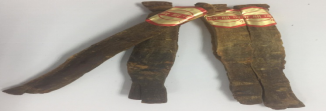
Figure 2: Red Ginseng
3. Sugar Ginseng (糖参, táng shēn) is processed by first soaking ginseng in boiling water for 3-7 minutes, then placing it in cold water for 10 minutes, drying it, and then piercing small holes in the ginseng before soaking it in concentrated sugar water for 24 hours, followed by drying. Sugar ginseng is favored for its taste and is mainly used for children to tonify qi and strengthen the spleen.


2. How to Select and Consume Ginseng Products
When selecting Red Ginseng, look for a main root that is thick, plump, without wrinkles, brownish-red, and semi-transparent; for White Ginseng (糖参, táng shēn), the main root should have horizontal lines, long lateral roots, fine skin, and a pale yellow-white color; for Raw Dried Ginseng, the main root should be round, deeply wrinkled, and of solid texture.
For individually packaged Red Ginseng or Korean Ginseng, you may often see terms like “Heavenly, Earthly, Good, Cut (翁)” on the outer packaging. What do they mean?
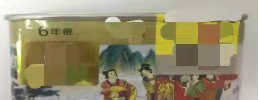
Figure 3: 6-Year-Old Heavenly Ginseng
1. Heavenly, Earthly, Good, Cut (翁) classifies ginseng into four grades based on internal structure, body shape, color, and skin: Heavenly Ginseng (天参, tiān shēn) is a first-grade product with two well-developed “legs” (支根, zhī gēn); Earthly Ginseng (地参, dì shēn) is a second-grade product with dense internal structure; Good Ginseng (良参, liáng shēn) is a third-grade product with a relatively complete main body; and Cut Ginseng (切参, qiē shēn) is a fourth-grade product.
2. Six-Year-Old Ginseng (六年根, liù nián gēn) refers to ginseng that has grown for six years, which is generally considered the optimal maturation period, providing sufficient active ingredients and efficacy.
3. The number of roots (支数, zhī shù) indicates the size of the ginseng. Common specifications include: 20 roots, 32 roots, 48 roots, 64 roots, and 80 roots, meaning that each 500 grams contains 20, 32, 48, 64, or 80 roots respectively. The larger the number, the smaller the ginseng shape; similarly, for ginseng of the same grade, a smaller number indicates a higher price.
Modern pharmacology has proven that ginseng contains over twenty types of ginsenosides, as well as phenolic compounds, peptides, amino acids, sterols, and choline, which can enhance human metabolism, regulate bodily functions, and have significant effects on restoring physical condition and improving immunity.
When consuming ginseng, it is important to choose according to individual constitution. It is especially important to note that ginseng is generally suitable for those with deficiency syndromes (虚症, xū zhèng); patients with diagnosed conditions should avoid it, as it may easily lead to “excess heat” (上火, shàng huǒ); ginseng is best taken on an empty stomach in the morning, with a recommended dosage of 3-7 grams for cultivated ginseng, while wild mountain ginseng should not exceed 0.3 grams; for regular consumption of wild mountain ginseng, 0.1 grams is sufficient, and long-term excessive use should be avoided.
END
Note: All images in this article are sourced from the internet for public dissemination. We thank the authors of the images! If there is any infringement, please contact us for removal.
 Author: Qiu Wenge
Author: Qiu Wenge
Deputy Chief Herbalist, Huizhou Central People’s Hospital
Deputy Chief Herbalist at Huizhou Central People’s Hospital, member of the TCM Working Committee of Guangdong Provincial General Hospital; member of the Hospital Pharmacy Professional Committee of Guangdong Provincial TCM Association; Deputy Director of the Quality Control Center for TCM Affairs in Huizhou; member of the Management and Evaluation Quality Control Center of Huizhou TCM Hospital; member of the Expert Review Database for TCM Specialties in Huizhou; member of the Huizhou Integrative Medicine Association; “Non-academic” teacher for the Huizhou Health and Family Planning Commission; and an external appointed teacher at Huizhou Vocational and Technical College.
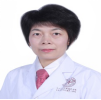 Review Expert: Li ChuyunChief Pharmacist, Huizhou Central People’s Hospital
Review Expert: Li ChuyunChief Pharmacist, Huizhou Central People’s Hospital
Chief Pharmacist and Clinical Chief Pharmacist at Huizhou Central People’s Hospital, Director of the Clinical Pharmacist Training Center of the Chinese Medical Association; Head of the PSM Huizhou Branch; Council member of the Guangdong Pharmacology Society; Executive member of the Drug Economics Committee; Executive member of the Clinical Rational Drug Use Management Committee; and advisor to the Expert Committee on Pharmaceutical Science Popularization of the Provincial Pharmacy Association.
Author: Guangdong Provincial Pharmacy Association, Huizhou Central People’s Hospital, Qiu Wenge
Review: Guangdong Provincial Pharmacy Association, Huizhou Central People’s Hospital, Li Chuyun
Editor: Guangdong Provincial Pharmacy Association, Sun Yat-sen Memorial Hospital of Sun Yat-sen University, Shenshan Central Hospital, Fu Jianqing

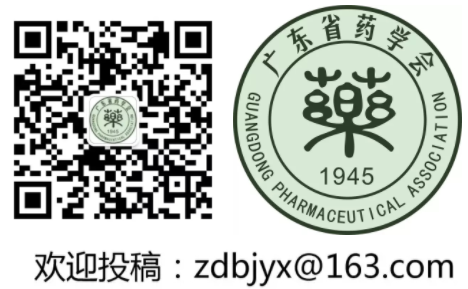
 If you like it, follow me for more updates.
If you like it, follow me for more updates.

